A Brief History Of Tapestries.
An Objets d'Art tapestry wall-

Tapestries have been woven for hundreds of years in diverse cultures. Both ancient
Egyptians and the Incas buried their dead in tapestry woven clothing. Important civic
buildings of the Greek Empire, including the Parthenon, had walls covered by them.
Through the unique medium of tapestry making the stories of Homer's Odyssey and Illiad
were brought to life in ancient Greece. In a similar way the accounts of Virgil's
Æniad and Ovid's Metamorphoses were made accessible to Roman culture. Between the
hand-
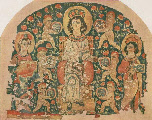
In the 13th and 14th centuries the Church recognized the value of tapestries in illustrating
Bible stories to its illiterate congregations. Few of these have survived. The oldest
existing set is the Apocalypse of St John, six hangings 18 foot high, totalling 471
foot in length which were woven from 1375 to 1379 in Paris. This was the centre of
production until the Hundred Years War (1337 -
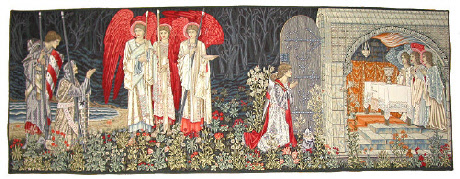
Tapestries became status symbols amongst the aristocracy in the Middle Ages. They also had much practical use, providing insulation for castle walls, covering openings and giving privacy around beds. Kings and nobles took them on their travels from castle to castle for reasons of comfort and prestige. Tapestries often changed hands after battle, and since the victor's door and window openings might be a different size the acquired hangings might be cut up or even joined to other tapestries.
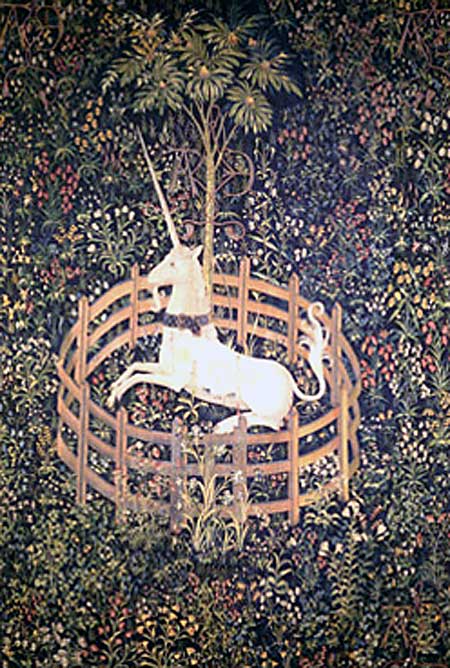
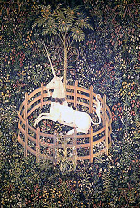
Many of the best known works such as the 'Lady with the Unicorn' series were woven at the turn of the 15th century in the Loire valley. It has been estimated that 15,000 people were employed in the craft at this time. Many were itinerant and passed their skills from father to son. Their charming 'mille fleurs' scenes had backgrounds of small local flowers, perhaps inspired by the practice of strewing roadways with flowers on local fete days. At this time it would take a skilled father/son team two months to weave just one square foot of tapestry.
Medieval weavers extracted their dyes from plants and insects in a range of less than twenty colours. For example, red came from madder, poppies or pomegranates and woad produced blue (a process that was so profitable in 16th century France that importing woad from the East was punishable by death).
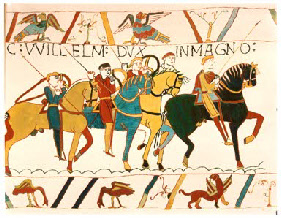
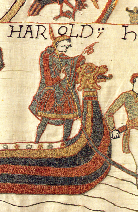
The most popular medieval images were Biblical stories, myths, allegories (the ever-
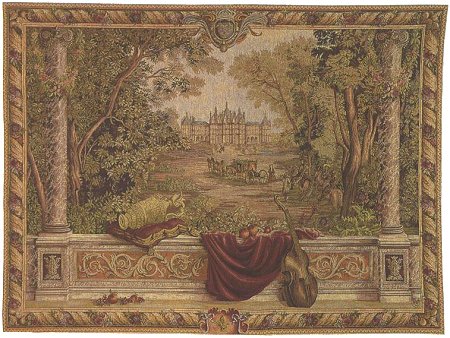
Scholars define Medieval times synonymously with the Middle Ages, meaning from the
fall of the Roman empire through the 14th century, and describe the Renaissance as
the period from the 14th century through the 16th century. This time frame can only
be used as a general rule of thumb, as the transition in art was more gradual. As
a matter of fact, many tapestry pieces from the 15th and 16th century would be considered
medieval, though technically woven during the Renaissance. Early works were usually
adapted from manuscripts and weavers were free to create images as they perceived
them: often with imagination and humour.By the Renaissance these freelance creations
had become full-
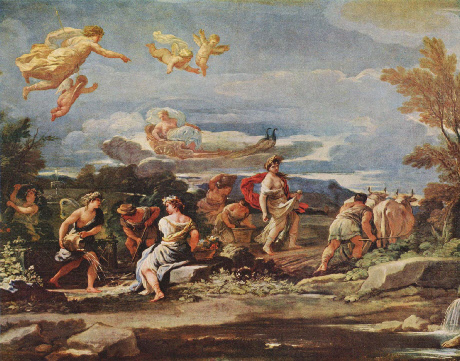
In 1663, during the lavish reign of Louis XIV, Les Gobelins factory was founded in Paris employing over 800 artisans in the production of tapestries for the royal court. Other European countries followed, opening factories on behalf of their rulers. They employed Flemish weavers who by now had to complete a twelve year apprenticeship. Louis XIV's estate inventory at his death listed 2,155 Gobelins tapestries. Henry VIII's collection totalled over 2,000 in seventeen royal residences.
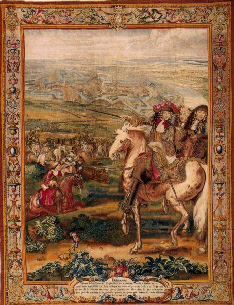
Rococo landscapes were popular in the 18th century typified by the designs of Francois
Boucher (1703-
During the French Revolution the social changes of the times so decimated the tapestry market that the French Directory ordered 190 be burnt in 1797 rather than retain them for their value complete. They considered the gold and silver threads to have greater value. A positive development of this period however was the invention of
the Jacquard mechanical loom in Flanders in 1804. It processed perforated cards, like pianolas or like early IBM computers, which fed the coloured yarns to the shuttle. It enabled tapestries to become accessible to a wider market and it still forms the basis of the techniques used today.
By the late 1800's the Gobelins dyeworks produced a colour range of 14,000 tones. Producing tapestries with such detailing had not surprisingly become very expensive. Furthermore little creativity existed with most pieces being based on earlier designs.
Modern tapestry weaving owes much to the vigour and freedom bought by the Arts and
Crafts Movement headed by William Morris in England. He revived many old crafts;
tapestry weaving being one of the beneficiaries of his fresh vision and creative
energy. He visited French weavers in 1878 and described the workshops at Aubusson
as 'a decaying commercial industry of ..rubbish'. A year later he had a high-
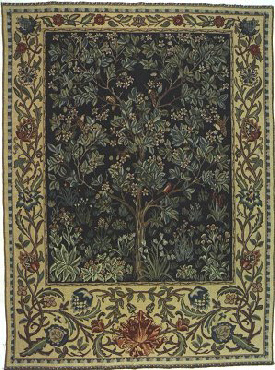
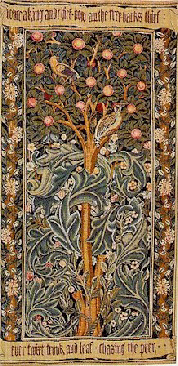
Today few tapestries are hand-
We offer many designs and period styles, often in several sizes, from many European and world famous weavers. Some tapestries have matching cushion covers too. These art heirlooms of the future are a wonderful feature in any home. Please feel free to browse our tapestry department in the Objets d'Art catalogue.